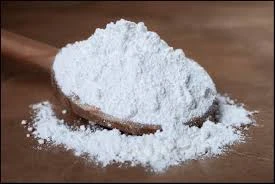
Exploring Various Categories of Food Additives and Their Uses in Food Production
Different Types of Food Additives
Food additives play a significant role in the modern food industry. They are substances added to food to enhance its flavor, appearance, preservation, and overall quality. While the use of food additives has stirred debate over health implications, they are essential for food manufacturers to provide safe, appealing, and convenient products. In this article, we will explore the different types of food additives, their purposes, and examples.
1. Preservatives
Preservatives are added to food to prevent spoilage caused by microorganisms or chemical reactions. They help extend the shelf life of products, making them safe for consumption over longer periods. Common preservatives include sodium benzoate, potassium sorbate, and sulfites. For example, sodium nitrite is frequently used in cured meats to prevent the growth of Clostridium botulinum, a bacteria that can cause food poisoning.
2. Flavor Enhancers
Flavor enhancers are substances that intensify the existing flavors in food. They do not add their own flavor but rather enhance the inherent taste of the ingredients. Monosodium glutamate (MSG) is one of the most well-known flavor enhancers, widely used in savory dishes, snacks, and processed foods. Other examples include yeast extracts and hydrolyzed vegetable proteins. These additives are popular in restaurants and pre-packaged meals, providing a richer taste experience.
Color additives are used to enhance or restore the color of food, making it more appealing to consumers. These can be natural or synthetic. Natural color additives include beet juice (for red), turmeric (for yellow), and spirulina (for blue). Synthetic color additives, like Red 40 or Yellow 5, are often used in candies, beverages, and pastries, giving them bright, eye-catching colors. While color additives help improve visual appeal, they also raise concerns over potential allergic reactions and hyperactivity in children.
different types of food additives

4. Emulsifiers
Emulsifiers are substances that help blend ingredients that normally do not mix well, such as oil and water. They create a stable mixture and improve the texture and consistency of food products. Common emulsifiers include lecithin (found in egg yolks), mono- and diglycerides, and soy lecithin. Emulsifiers are commonly used in salad dressings, mayonnaise, and baked goods to maintain a smooth texture and enhance mouthfeel.
5. Stabilizers and Thickeners
Stabilizers and thickeners are added to improve the texture and consistency of food products. Stabilizers help maintain the uniform distribution of ingredients, while thickeners increase the viscosity of liquids. Common examples include gelatin, agar-agar, and xanthan gum. These additives are widely used in products like ice cream, sauces, and soups, providing a desirable thickness and preventing separation.
6. Sweeteners
Sweeteners are used to enhance the sweetness of foods without the added calories of sugar. They can be natural, such as honey or agave syrup, or artificial, like aspartame and sucralose. These additives play a crucial role in products aimed at those looking to reduce sugar intake, such as diet sodas and sugar-free desserts. The safety of artificial sweeteners has been a topic of research and discussion, prompting some consumers to prefer natural alternatives.
Conclusion
Food additives are an integral part of the food we consume daily, serving various purposes from preservation to flavor enhancement. While most additives are deemed safe by regulatory authorities when used properly, consumers should be mindful of the ingredients in their food. The growing trend towards cleaner labels and natural ingredients reflects a desire for transparency and health consciousness among consumers. Understanding the different types of food additives can help individuals make informed choices about their diets and appreciate the complexities of modern food production. As the food industry evolves, the role of additives will continue to develop in response to consumer preferences and health considerations.
-
The Safety Challenges of Ammonium Nitrate FertilizerNewsJun.26,2025
-
The Critical Role of Mining ChemicalsNewsJun.26,2025
-
Shelf Life of Glacial Acetic Acid Food GradeNewsJun.26,2025
-
Enhancing PVC Longevity with 1,2,3-Benzotriazole InnovationsNewsJun.26,2025
-
China’s Dominance in Food Additive ProductionNewsJun.26,2025
-
Can Aluminum Hydroxide Replace More Toxic Alternatives?NewsJun.26,2025
-
PE and PP Plastics with Benzotriazole AdditivesNewsJun.12,2025
Hebei Tenger Chemical Technology Co., Ltd. focuses on the chemical industry and is committed to the export service of chemical raw materials.
-

view more DiethanolisopropanolamineIn the ever-growing field of chemical solutions, diethanolisopropanolamine (DEIPA) stands out as a versatile and important compound. Due to its unique chemical structure and properties, DEIPA is of interest to various industries including construction, personal care, and agriculture. -

view more TriisopropanolamineTriisopropanolamine (TIPA) alkanol amine substance, is a kind of alcohol amine compound with amino and alcohol hydroxyl, and because of its molecules contains both amino and hydroxyl. -

view more Tetramethyl Thiuram DisulfideTetramethyl thiuram disulfide, also known as TMTD, is a white to light-yellow powder with a distinct sulfur-like odor. It is soluble in organic solvents such as benzene, acetone, and ethyl acetate, making it highly versatile for use in different formulations. TMTD is known for its excellent vulcanization acceleration properties, which makes it a key ingredient in the production of rubber products. Additionally, it acts as an effective fungicide and bactericide, making it valuable in agricultural applications. Its high purity and stability ensure consistent performance, making it a preferred choice for manufacturers across various industries.











